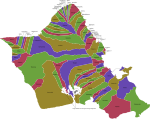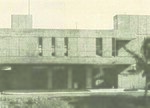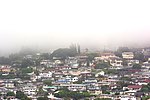Bishop Museum

The Bernice Pauahi Bishop Museum, designated the Hawaiʻi State Museum of Natural and Cultural History, is a museum of history and science in the historic Kalihi district of Honolulu on the Hawaiian island of Oʻahu. Founded in 1889, it is the largest museum in Hawaiʻi and has the world's largest collection of Polynesian cultural artifacts and natural history specimens. Besides the comprehensive exhibits of Hawaiian cultural material, the museum's total holding of natural history specimens exceeds 24 million, of which the entomological collection alone represents more than 13.5 million specimens (making it the third-largest insect collection in the United States). The Index Herbariorum code assigned to Herbarium Pacificum of this museum is BISH and this abbreviation is used when citing housed herbarium specimens. The museum complex is home to the Richard T. Mamiya Science Adventure Center.
Excerpt from the Wikipedia article Bishop Museum (License: CC BY-SA 3.0, Authors, Images).Bishop Museum
Bernice Street, Honolulu Kalihi
Geographical coordinates (GPS) Address Website External links Nearby Places Show on map
Geographical coordinates (GPS)
| Latitude | Longitude |
|---|---|
| N 21.333333333333 ° | E -157.87061111111 ° |
Address
Bernice Pauahi Bishop Museum (Bishop Museum)
Bernice Street 1525
96817 Honolulu, Kalihi
Hawaii, United States
Open on Google Maps




